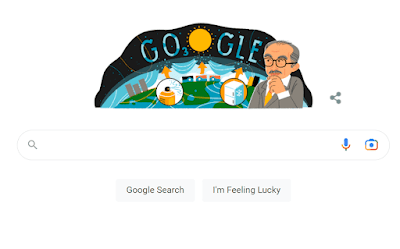Today, March 19th, the chemist Mario Molina would have celebrated his 80th birthday and is recognized by Google with a very unique doodle. The doodle focuses not just on the scientist, but also on his most crucial discovery, which earned him the Nobel Prize and transformed everything: Certain industrial gases, according to Mario Molina, deplete the earth’s ozone layer.
Today’s Google Doodle honoring Mario Molina is highly detailed and, as a result, a little restless at first look, but it still conveys the most crucial messages: First and foremost, Mario Molina, whose 80th birthday is commemorated with the Doodle. The chemist is seen in a serious position on the right border of the logo, holding his most important discovery. When compared to a photograph of Molina, the persona is really well taken.
The action revolves around his most important discovery: the toxicity of some industrial chemicals to the Earth’s ozone layer. The gases used in spray cans, freezers, and air conditioning systems destroy the earth’s ozone layer, causing the “ozone hole” to expand and therefore harming the earth’s crucial sun-protective barrier. The entire situation is explained in the Doodle in a very simple and understandable manner.
The third part is, of course, the Google logo, which is plainly visible and is situated in the space displayed surrounding the sun. The text is somewhat elliptical in shape, and the second O is substituted by the, in this case, dangerous sun. Overall, a really good and maybe informative Doodle.
Dr. Molina was born in Mexico City on this day in 1943. He was so interested in science as a youngster that he converted his bathroom into a makeshift laboratory. Nothing beats the thrill of seeing tiny creatures pass through your toy microscope.
Dr. Molina then got a bachelor’s degree in chemical engineering from Mexico’s National Autonomous University and a postgraduate degree from Germany’s University of Freiburg. He came to the United States after finishing his studies to conduct postdoctoral research at the University of California, Berkeley, and afterwards at the Massachusetts Institute of Technology.
In the early 1970s, Dr. Molina started explore how manmade chemicals impact the Earth’s atmosphere. He was among the first to recognize that chlorofluorocarbons (a chemical present in air conditioners, aerosol sprays, and other products) deplete ozone and allow UV light to reach the earth’s surface. He and his colleagues reported their findings in Nature, earning them the Nobel Prize in Chemistry.
The revolutionary study served as the foundation for the Montreal Protocol, an international treaty that successfully prohibited the manufacturing of roughly 100 ozone-depleting substances. This worldwide alliance is regarded as one of the most significant environmental accords ever formed, setting a model for how nations might successfully collaborate to combat climate change.
Dr. Molina’s critical scientific discoveries have put the planet’s ozone layer on pace to fully regenerate over the next few decades!








+ There are no comments
Add yours